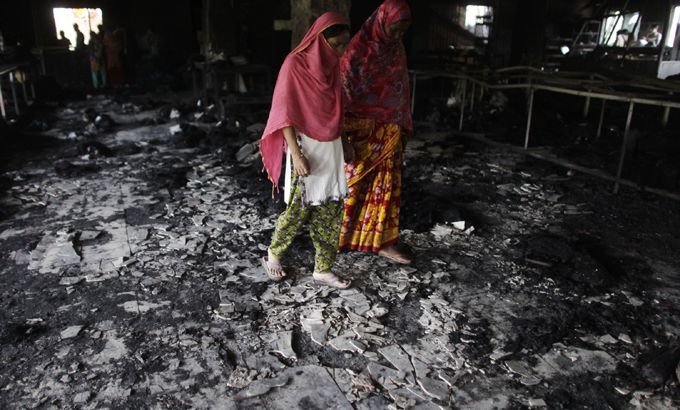
Cutting corners in Bangladesh
A deadly blaze in a clothing factory near Dhaka highlights an industry wrapped in dangers for its workers.
Bangladesh is counting the cost of yet another fire at a garment factory in its busy Ashulia industrial belt. It is the latest blow to an industry already under pressure for its notoriously poor record on fire safety.
|
“They have safety measures in their factories but I would say it is ‘so-called’ – it is to show the western brands that they have fire extinguishers in these factories but if I give you a percentage – it’s not that many. More than 60 per cent do not have enough fire extinguishing equipment and the rest, the 40 per cent, they have them but the workers are not trained to use those. So literally whatever they have, it really does not mean anything.“ – Kalpona Akter, a labour activist |
Much of the clothing produced in Bangladesh and other Asian suppliers, ends up on the shelves of internationally known retailers.
Keep reading
list of 4 itemsA flash flood and a quiet sale highlight India’s Sikkim’s hydro problems
Why is Germany maintaining economic ties with China?
Behind India’s Manipur conflict: A tale of drugs, armed groups and politics
Ready made garments destined mainly for the US and Europe, account for around 80 per cent of Bangladesh’s exports each year, making it the engine room of the country’s economic growth.
But it is also a dangerous business for around two million Bangladeshi workers.
Factory incidents – most of them fires – have killed over 600 garment workers since 2006 and while some big brands like Calvin Klein and Tommy Hilfiger have signed up to new fire safety plans, not everyone has.
Local rights groups are accusing many of them of exploitation.
Nevertheless, this latest blaze will undoubtedly spur labour rights activists to push even harder for protection for workers who are some of the worst-paid workers in the world.
This fire is the latest fatal incident involving a factory making clothes for export around the world.
- In December 2010, 29 workers died in another factory in Bangladesh that made clothes for a number of brands, including Tommy Hilfiger, Calvin Klein and Gap
- And in September, a fire at a factory in Karachi killed 300 people – that was Pakistan’s worst industrial accident
- Bangladesh has about 5,000 garment factories, which are staffed by mostly women
“The BGMEA together with 19 brands have made two films to create awareness among workers and management – because they work together in the factory. In Bangladesh, we have on average, 112 incidents but you will be happy to know that in 2007, 2008, 2009 and 2011 there were no casualties by the grace of Almighty.“
– Shafiul Islam, Bangladesh Garment Manufacturers & Exporters Association
Asia is the Mecca of clothing manufacturing. China is the world’s largest exporter of clothing, chalking up more than $150bn in exports last year.
Bangladesh ranks second, but it is pretty far behind, at almost $20bn – that represents around 80 per cent of all its exports.
India sold clothing abroad worth $14.5bn in 2011 – just ahead of Turkey.
Indonesia pulls in $8bn and Pakistan earns $5bn from its sales in clothing – its still good business, but nothing compared to its more productive rivals.
So with such impressive figures but such dismal conditions for its workers, we ask what can be done to protect workers in the textile industry and improve their basic rights?
To analyse this, Inside Story, with presenter Adrian Finighan, discusses with guests: John Hilary, an executive director of War On Want – an anti-poverty charity based in London; Shafiul Islam, president of the Bangladesh Garment Manufacturers and Exporters Association; and Kalpona Akter, a former child labourer and now labour activist with the Bangladesh Centre for Workers’ Solidarity.
|
“For many factories in Pakistan, Bangladesh, Cambodia,– wherever it may be – they have been forced to cut corners by the big brand retailers in West whether it be in Europe or the USA because these brand retailers hold all the power in the value chain. They go to factories and say ‘We want you to give us cheaper and cheaper and cheaper goods so we can then pass on these savings on to our customers in West.’ And that means that the factories have to cut corners. And by cutting corners they put pressure on wages, on terms and conditions so that workers have to work incredibly long hours in awful conditions and they cut corners when it comes to health safety and that is when you see these horrific fires with terrible loss of life. John Hilary, War On Want |